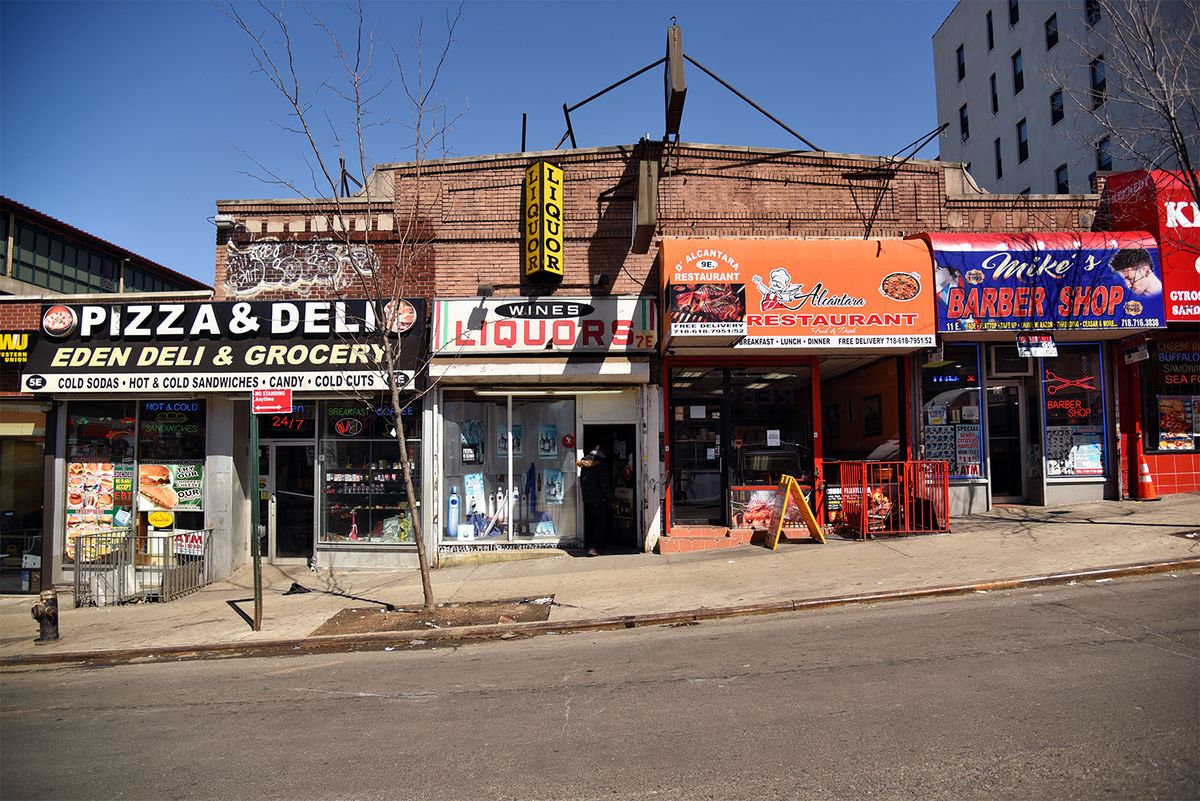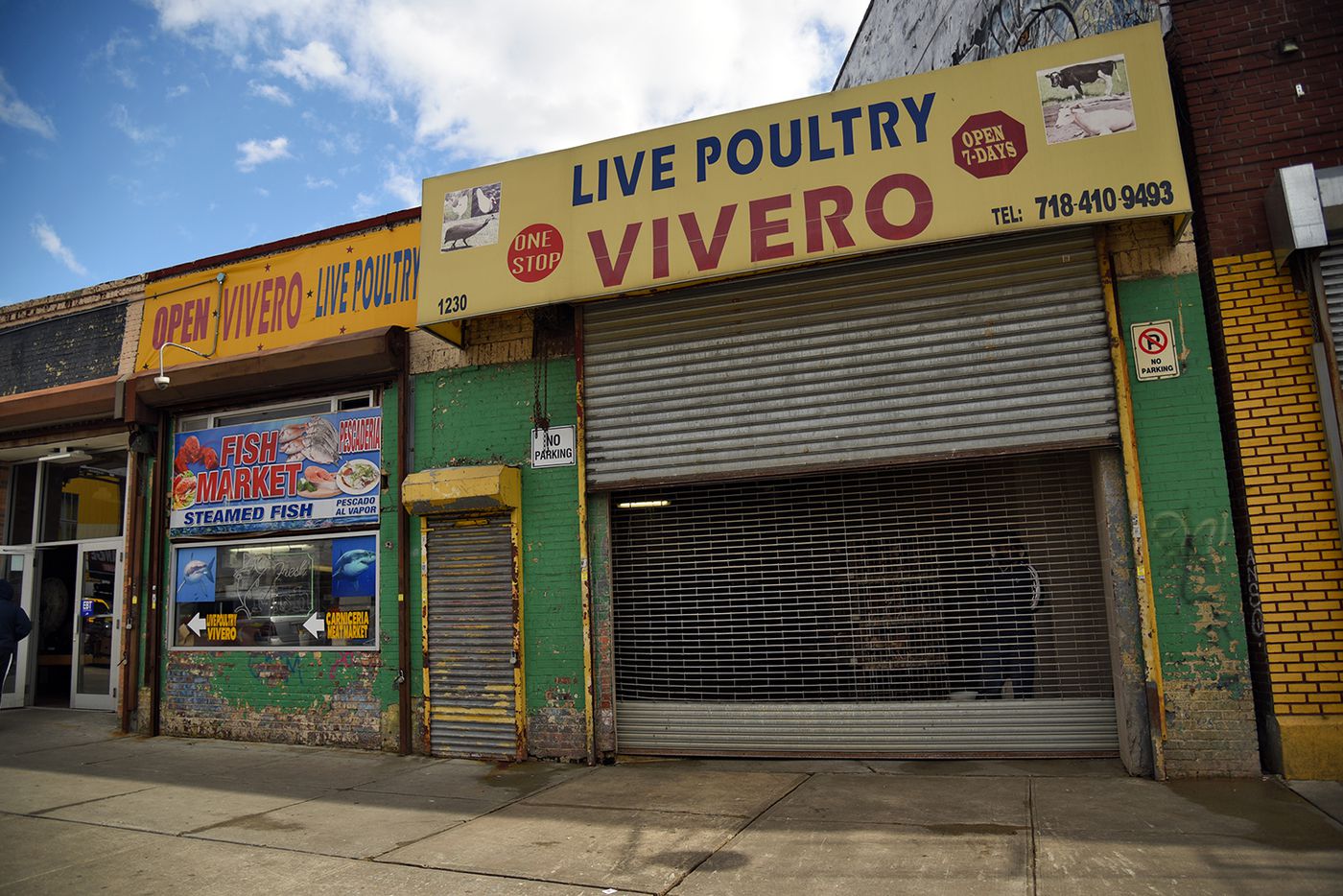Rezoning Jerome Avenue: Examining Geographies of Displacement
 Source: What Happens to Jerome Avenue After Its Rezoning? / Nathan Kensinger for Curbed NY
Source: What Happens to Jerome Avenue After Its Rezoning? / Nathan Kensinger for Curbed NY
In recent years, neighborhood rezonings have emerged as a flashpoint across New York City. In 2014, the de Blasio administration announced plans to rezone 15 neighborhoods across New York City in an effort to jump-start the city’s stock of affordable housing units. According to the administration, the neighborhood rezonings (many of which allowed for greater residential development capacity) would help the city reach its goal of creating 300,000 below-market-rate housing units by 2026.
In neighborhoods from Inwood to Bushwick, neighborhood residents and community activists have raised the alarm bell that rezonings induce gentrification and displacement pressures. According to opponents, rezonings often tend to raise property values, increase rents and displace low-income and minority households. Look no further than East New York, activists reasoned, where real estate speculation, tenant harassment, and evictions accelerated at the first whisper that the NYC Department of City Planning was considering rezoning the neighborhood. Although anecdotal evidence suggests that rezonings might accelerate gentrification pressures, minimal empirical evidence in the literature has investigated what happens following a neighborhood rezoning.
This project explores one embattled rezoning in New York City–the rezoning of Jerome Avenue in the southwest Bronx. In an effort to understand how rezonings interact with gentrification pressures, this project asks: how did the three following measures of displacement activity change in the years leading up to and in the immediate aftermath of the Jerome Avenue rezoning?
- Real estate speculation activity
- Residential and commercial evictions
- Affordable housing production
Background on Jerome Avenue
Jerome Avenue sits in the southwestern Bronx, running north to south through Highbridge, Mount Eden, Concourse, Mount Hope, University Heights, and Morris Heights. Historically, Jerome Avenue developed as a service district, providing parking and commercial services to the predominantly residential neighborhoods that surround the area. Existing zoning permits heavy commercial and light industrial uses along most of Jerome Avenue, and as a result, low-scale retail and industrial establishments line the corridor.
Jerome Avenue has been heavily shaped by the highways that snake throughout the Bronx. An exit to the Cross Bronx Expressway empties directly onto the avenue, providing easy access to the district. A stone’s throw away from the Cross Bronx Expressway, auto-related businesses started to cluster along the corridor. Jerome Avenue remains one of the most vibrant homes of auto-related businesses in the city to this day.
As a result, tire shops, auto-repair shops, and gas stations line much of Jerome Avenue.
 Source: What Happens to Jerome Avenue After Its Rezoning? / Nathan Kensinger for Curbed NY
Source: What Happens to Jerome Avenue After Its Rezoning? / Nathan Kensinger for Curbed NY
The Jerome Avenue corridor is also home to a rich array of family and immigrant-owned businesses. Many of these businesses cater to the predominantly Spanish-speaking communities living in the residential neighborhoods surrounding Jerome Avenue.
 Source: What Happens to Jerome Avenue After Its Rezoning? / Nathan Kensinger for Curbed NY
Source: What Happens to Jerome Avenue After Its Rezoning? / Nathan Kensinger for Curbed NY
Jerome Avenue Rezoning
In 2015, the NYC Department of City Planning announced the planned rezoning of Jerome Avenue, arguing that the rezoning would help protect and preserve the neighborhood’s stock of affordable housing, revitalize existing retail businesses, improve existing park and open space opportunities, and support workforce development in the neighborhood. The NYC Department of City Planning identified Jerome Avenue as an ideal site for a rezoning because the city argued that the area could support increased residential density. Second, the city argued that the area features prime transit access, being served by the 4, B, and D train lines and several highways. According to opponents, however, the rezoning served to further push affordable housing to the outer reaches of the Bronx while freeing up space for upscale development in the rapidly gentrifying neighborhoods of the South Bronx.
As the Jerome Avenue rezoning moved through the city’s land use review process, the NYC Department of City Planning hosted over 40 public events with thousands of residents. This public engagement process culminated in the release of the Jerome Avenue Neighborhood Plan, which provided a framework to guide future planning and policy action in the neighborhood. With the release of the plan, the city committed to investing approximately $189 million in capital projects in the neighborhood. After surrounding community boards, the Bronx Borough President, and the City Planning Commission approved the rezoning, the City Council approved the rezoning in March 2018.
Yet, the rezoning quickly emerged as a site of conflict as it moved through the city’s land use review process, following the path of other embattled rezoning plans in NYC. Opponents charged that the rezonings accelerated gentrification and displacement, pointing to rapid rent increases and real estate speculation in other NYC neighborhoods that have undergone rezonings. In particular, opponents argued that the rezoning would place strain on the auto-related businesses that have long anchored Jerome Avenue and that tend to be staffed by low-income households and immigrants.
The Bronx Coalition for a Community Vision, a coalition of residents; religious groups; and unions representing workers at auto-related businesses, emerged as one of the most vocal opponents of the rezoning. The organization advocated that 100% of new units constructed along Jerome Avenue should be below-market-rate units and called on the city to develop a more authentic public engagement process.
Methodology & Datasets
In order to investigate how various measures of displacement activity changed in the years surrounding the Jerome Avenue rezoning, this project leverages datasets from several sources. First, using data from the NYC Department of City Planning, I examined changes in real estate assessment values in the Jerome Avenue corridor between 2015 and 2020 to understand whether the rezoning coincided with real estate speculation pressures. Second, I leveraged a dataset from the NYC Department of Investigation to examine the landscape of residential and commercial evictions between 2018 and 2019. Last, I used data from the NYC Department of Housing Preservation & Development to examine new affordable housing units between 2018 and 2019.
Changes in Property Values
The map below presents changes in property values along the Jerome Avenue corridor between 2015 and 2020. During this time period, property values increased on average by 241%. This followed city and borough-level trends towards a precipitous increase in property values. Within the study area, residential property values rose at a much faster rate than commercial properties; residential property values increased by 176% compared to 44% among commercial properties.

Although property values were rising across the Bronx and across the city during the same time period, these findings provide some support to opponents’ claims that the Jerome Ave rezoning would raise surrounding property values. Given that the Jerome Avenue corridor historically has not experienced significant investment, these findings suggest that the rezoning might have played a part in raising surrounding property values. Moreover, these findings align with previous reports that rezonings tend to induce real estate speculation activity, particularly in hot real estate markets.
Residential and Commercial Evictions
The map below presents the landscape of commercial and residential evictions in the study area and the surrounding three zip codes in the two years following the Jerome Ave rezoning. Between 2018 and 2020, approximately 2,500 households and businesses were evicted from the area. These evictions accounted for about a third of all evictions across the Bronx.
Roughly one in five evictions in the study area were commercial evictions, reflecting the heavily commercial character of Jerome Avenue. Several of the businesses that were evicted served auto-related uses, consistent with rezoning opponents’ claims that auto-related businesses would face acute displacement pressures.

Although these evictions provide a lens into the landscape of evictions following the Jerome Ave rezoning, it is worth noting that the evictions presented here likely represent a fraction of total evictions that occurred in the Jerome Avenue corridor. Tenant advocacy organizations such as JustFix.nyc and the Anti-Eviction Mapping project have called attention to the ways in which existing public datasets often underreport evictions and have conducted careful investigative research to supplement publicly available evictions datasets.
Affordable Housing Production
The map below presents newly constructed affordable housing units in the years immediately following the Jerome Avenue rezoning. Between 2018 and 2019, roughly 1,400 new affordable housing units were added to the Jerome Ave corridor. The majority of the new units targeted households at the lowest end of the income spectrum, with roughly one-third of new affordable units for extremely low-income households and one-fifth of new affordable units for very low-income households. In response to advocates’ demands, several of the affordable housing projects require that the units will be permanently affordable.

In some respects, the roughly 1,400 affordable housing units created make a substantial dent in the roughly 3,250 affordable units that the city planned to add to the neighborhood, many of which would be permanently affordable units. Despite these inroads, critics have charged that the newly affordable housing developments still might not be affordable enough to the neighborhoods impacted by the Jerome Ave rezoning, which have a median household income between $20 and $30K. Moreover, as others scholars have pointed out, newly constructed affordable housing units often do not benefit the very residents that are immediately displaced as a result of rezoning activity; the long lag time associated with affordable housing construction means that residents displaced in the aftermath of the rezoning might have long moved away. This raises the question not only of whether the Jerome Ave rezoning will provide enough new affordable housing, but also raises the question of who will benefit from the rezoning.
Conclusion
In recent years, neighborhood rezonings have emerged as a hot-button issue across New York City. Although opponents have argued that rezonings tend to usher in a wave of luxury development and accelerate gentrification and displacement pressures, minimal research has examined whether rezonings in fact accelerate gentrification pressures. Given this gap in the literature, this project sought to better understand how three measures of displacement activity change following a rezoning. While this analysis is not causal, it does suggest that property values and evictions continued following the rezoning, despite assurances from elected officials that the rezonings would not spur displacement pressures.
With more neighborhood rezonings in the pipeline in NYC, future research should examine both the short- and long-term impacts of de Blasio’s rezoning strategy with an eye towards better understanding how rezonings interact with gentrification pressures.
References
Rebecca Bellan, “The Bronx: Don’t Call It a Comeback,” City Lab, August 14, 2018, https://www.citylab.com/equity/2018/08/the-bronx-dont-call-it-a-comeback/567413/.
Elizabeth Kim, “Interactive Map Tracks NYC Evictions & The Landlords Who File for Them,” Gothamist, May 7, 2019, https://gothamist.com/news/interactive-map-tracks-nyc-evictions-the-landlords-who-file-for-them.
“Jerome Ave Neighborhood Plan,” NYC Department of City Planning, March 2019, https://www1.nyc.gov/assets/planning/download/pdf/plans-studies/jerome-ave/jerome-avenue-progress-to-date.pdf
Samar Khurshid, “The East New York Rezoning, One Year Later,” Gotham Gazette, March 23, 2017, https://www.gothamgazette.com/city/6825-the-east-new-york-rezoning-one-year-later.
Matthew Rothstein, “Central Bronx Rezoning To Build Affordable Housing On Car-Repair-Heavy Strip Moves Ahead,” Bisnow, February 15, 2018, https://www.bisnow.com/new-york/news/neighborhood/central-bronx-rezoning-affordable-housing-auto-shops-jerome-ave-85072.
Abigail Savitch-Lew, “Some Suspect East New York Rezoning Has Triggered Speculation,” City Limits, March 10, 2016, https://citylimits.org/2016/03/10/some-suspect-east-new-york-rezoning-has-triggered-speculation/.
Tanay Warerkar, “Bronx’s Jerome Avenue Rezoning Moves Forward, But Not Without Issues,” Curbed NY, October 25, 2017, https://ny.curbed.com/2017/10/25/16543086/bronx-jerome-avenue-rezoning-community-board.